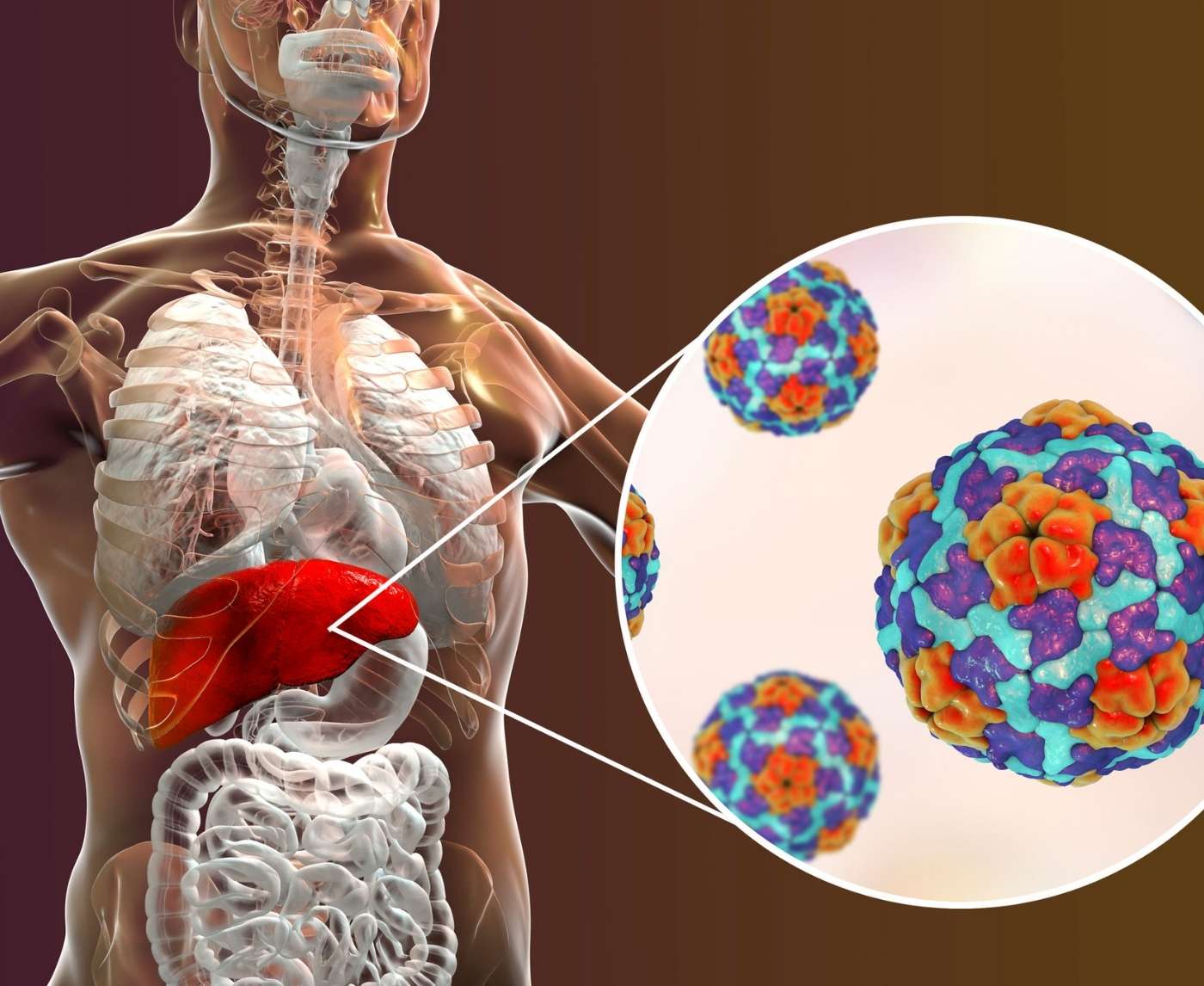HIV Test Too Early? Here’s When to Test for Accurate Results
Quick Answer: Most standard STD panels don’t include herpes or hepatitis C unless you specifically request them. Even “comprehensive” testing often leaves key infections out.
Negative Doesn’t Always Mean Clear
You leave the clinic with that envelope in your hand. All bad. A clean bill of health. But here's the kicker: that panel might not have included some of the most common and least understood STDs. Herpes. Hepatitis C. HPV. Sometimes you can get syphilis or HIV, depending on where you go and what you ask for.
This isn't about clinics trying to fool you. It's about old systems, insurance rules, and the huge gap between what people think they're being tested for and what they really are. A survey from 2023 that was published in the Journal of Sexual Medicine found that more than 60% of patients thought that herpes was included in their STD screening, even though most providers don't order it unless the patient has symptoms or asks for it.
Lucy isn't the only one. This happens all the time. People think that "panel" means "everything." But if you didn't ask the right questions or use a test that made it clear what was included, you might have been feeling safe when you weren't.

People are also reading: Can You Get Trich Without Cheating?
Why Herpes and Hep C Are So Often Left Out
Let’s start with herpes. It’s wildly common, an estimated 1 in 6 adults in the U.S. has genital herpes. But many providers don’t test for it unless you have visible sores or tell them you think you’ve been exposed. Why? Because the blood test can pick up past infections, doesn’t tell you when you got it, and isn’t always helpful for treatment decisions.
But here’s the thing: if you don’t test, you don’t know. And if you don’t know, you can pass it to partners, even when you’re asymptomatic.
Now Hepatitis C is a whole different beast. It doesn’t cause obvious symptoms for years, and can quietly destroy your liver. It’s not always sexually transmitted, but it can be, especially with blood contact, rough sex, or co-infections like HIV. Yet unless you’re in a high-risk group, it’s rarely included in a standard STD screening unless you specifically ask or use a panel that lists it.
Translation: the most common STDs people worry about? They’re often the ones not being tested for.
What’s Actually in a “Standard” STD Test?
The term “STD panel” is incredibly vague, and it varies wildly by provider. Some places test for two infections. Others for eight. Some call it “complete” if it includes chlamydia, gonorrhea, and HIV. But what about herpes? Hepatitis B? Trichomoniasis?
Here’s how it usually breaks down:
Table 1. What’s commonly included, and what isn’t, in different types of STD panels.
If you're using an at-home test, read the list of infections included. If you're at a clinic, ask to see the lab order form. If it’s not listed, it’s not tested.
The False Comfort of “All Negative”
You breathe out as soon as you get your results. No. No flags. You're safe. But most people don't know this: those results only show the infections you were tested for and the time frame in which they could be found.
What if you had sex without protection two weeks ago and got tested right away? You might feel responsible and take action. But for infections like HIV, syphilis, or hepatitis, it might be too soon. It can take weeks or even months for tests to show that you have these infections. That's the window period, and it's one of the most important things to remember when getting tested for STDs.It's not just about the tests you took. It's about when and how you tested.
Window Periods: Why Timing Is Important
If you test too soon, your body might not have made enough antibodies or viral load for the test to find anything. So, even though your results say "negative," you could still be sick. You're not clear; it's just too soon.
Table 2. Approximate window periods for common STDs. Testing too early increases false negatives.
If your last test was too soon after exposure, or didn’t include certain infections, consider retesting after the proper window. Otherwise, you're walking around with an empty answer sheet, not a clean one.
Why Providers Don’t Always Say What’s Missing
In many clinics, especially high-volume ones like urgent care or student health centers, STD testing is done fast. A provider may click a checkbox for a “standard panel,” assuming it’s enough. You may not be told what’s included, just that you’re “getting tested.” And unless you ask specific questions, no one’s going to spell it out for you.
This creates a dangerous communication gap. Providers may assume you only want the basics. Patients assume they’re getting everything. Both sides walk away thinking they’ve done their part, and no one realizes a major infection was never even tested for.
That’s not your fault. But it is your risk.
At-Home Testing: More Control, Still Some Gaps
At-home STD test kits have changed the game for privacy and accessibility, but they’re not immune to this issue either. Many kits advertise as “complete” or “comprehensive,” but when you check the fine print, they might still exclude herpes or hepatitis unless you add those tests on separately.
The upside? You can usually see exactly what’s included before you buy. The downside? If you don’t know to check, or don’t realize what should be on that list, you may still miss something critical.
Before you order any at-home test, scan the panel. Look for HSV-1 and HSV-2, Hep B, Hep C, and syphilis. If it’s not listed, it’s not being tested. And if it’s an add-on, it’s probably worth adding on.
Testing Doesn’t Always Equal Diagnosis
This might sound strange, but it’s true: getting tested doesn’t automatically mean you’re screened for everything that matters, or that the results give you the full picture. A negative test doesn’t mean you’re “clear” if no one ever tested you for what you were actually exposed to.
Herpes is the classic example. Unless you have an active sore to swab, most doctors won’t test for it unless you insist. And even then, many are reluctant because the blood test shows exposure but not necessarily a current infection. Still, isn’t it better to know if you’re carrying something that’s transmissible during symptom-free periods?
Diagnosis isn’t just about detection, it’s about context. What were you exposed to? When? How? What were you actually tested for? That’s the difference between checking a box and making an informed decision.
What to Ask Before You Test
If you're about to visit a clinic, order an at-home kit, or talk to your provider, here’s what to ask, not just for peace of mind, but to make sure your testing actually matches your risk:
- “What infections does this panel include?”
- “Does this test include both HSV-1 and HSV-2?”
- “Is hepatitis B and C part of this test, or do I need to request that separately?”
- “If I had an exposure two weeks ago, will this test catch it?”
- “Do I need to retest later based on any window periods?”
And if you’re using an at-home test kit: always read the infection list and window period guide. If something is missing, assume it’s not covered.
What a Truly Complete STD Panel Looks Like
There’s no such thing as a one-size-fits-all panel, but if you’re looking for maximum coverage, especially after high-risk exposure or multiple partners, here’s what should be on your radar:
Table 3. Key infections that make up a more complete STD panel and what to watch for during testing.
If you’re seeing a provider in person, ask for an expanded or “custom” panel. If you’re testing at home, look for a kit that either lists all these or lets you add them individually. This site offers targeted single-test kits if you just want to cover the ones you missed.
Knowing what you’re not being tested for is just as important as knowing what you are.
The Conversation Most People Never Have With Their Doctor
Let’s be honest, most STD tests are done fast. You check a box online, pee in a cup, maybe get a blood draw, and that’s it. No one sits you down to say,
“Hey, this test doesn’t include herpes or hepatitis unless you specifically ask.”
That kind of transparency? It’s rare. And it shouldn’t be.
But here’s the real problem: we don’t know what we’re supposed to know. Doctors assume patients understand what’s included. Patients assume doctors are testing for everything. And neither side wants to make it awkward. So it becomes this mutual, quiet assumption, and key infections fall through the cracks.
If you're lucky, the clinic staff mentions that herpes isn’t part of your panel. But even then, they might downplay it: “It’s not that accurate anyway,” or “It’s only necessary if you have symptoms.” The result? People walk out thinking they’ve been screened top to bottom… and they haven’t.
We need to normalize asking: “What exactly are you testing me for?” Say it out loud. Make it awkward if you have to. Because the only thing worse than asking is assuming, and then finding out the hard way that something important was never on the list.
This is your body. Your risks. Your relationships. You deserve the full conversation, not just the lab slip.

People are also looking for: Trichomoniasis Symptoms in Women vs Men
FAQs
1. Wait, why wouldn’t herpes be part of a standard STD test?
Because medicine is weird sometimes. Providers often skip herpes testing unless you’ve got visible sores or ask for it directly. Why? The blood test can’t tell when you got it, who gave it to you, or whether it’ll ever flare. But if you’re trying to protect your partners, or just need peace of mind, that info matters.
2. So… I could’ve tested negative but still have something?
Yeah. Totally possible. Negative results only reflect what you were actually tested for. If your panel didn’t include, say, Hep C or HSV-2, or you tested during the window period, your results could be clean while the infection quietly settles in.
3. Is Hepatitis C really an STD though?
It can be. It’s usually bloodborne, but rough sex, shared sex toys, or anything involving blood exposure can transmit it. It’s especially risky if you’re HIV-positive or have multiple partners. Bottom line: if you’ve been exposed in any way, get tested. Hep C is sneaky, and treatable.
4. How do I find out what was actually tested?
If you went to a clinic, call and ask for the lab order or test summary. If you used a home kit, check the itemized list. Don’t rely on vague words like “full panel” or “comprehensive”, those terms are often more marketing than medicine.
5. Is there a test that covers everything?
Not really. No single panel gets everything unless you custom-build it. A real “complete” test includes 8+ infections and might still skip HPV, Hep A, or Mycoplasma. Think of it like ordering a burger: you gotta ask for the toppings you want.
6. I got tested right after a hookup, was that too soon?
Maybe. Some STDs show up fast (like gonorrhea), but others, like HIV or syphilis, take weeks. If you tested within a few days, your results might not reflect the truth yet. You may need to retest in a few weeks, even if this round came back negative.
7. What if I’m embarrassed to ask for specific STD tests?
Totally normal. But think about it this way: being proactive about your health is the opposite of shameful. It’s hot. It’s responsible. And if someone judges you for asking to test for herpes or Hep C? That’s a red flag, not your problem.
8. How often should I be getting tested anyway?
Depends on your life. If you're monogamous and low-risk, once a year might be fine. But if you’re dating, hooking up, or living your best queer life, test every 3–6 months. Regular testing isn’t overkill. It’s self-respect.
9. Can I fix this if I already tested and missed stuff?
Absolutely. You don’t need to redo everything, just fill in the gaps. Order a single herpes or Hep C test, or ask your provider for an add-on. Think of it as topping off your sexual health fuel tank.
10. What’s the biggest mistake people make with STD testing?
Assuming the test is smarter than it is. Panels don’t read your mind, they don’t auto-detect every infection you’ve ever heard of. The biggest mistake? Thinking “negative” means “I’m all good” without checking what you were actually tested for.
Don’t Settle for Unanswered Questions
You’re not paranoid for wanting to know what’s going on in your body. You’re not overthinking it. You’re not asking for too much. You just want the truth, and that should never be hard to get.
Explore at-home STD test kits that actually list what they cover. Whether you’re filling gaps from a past test or starting fresh, you deserve more than a checkbox.
Your health, your call. Ask. Check. Test again. You’ll sleep better knowing.
How We Sourced This Article: We built this piece using guidance from trusted health authorities and peer-reviewed research, along with insights from real-world patient experiences. Over 15 reputable sources were reviewed; the five below are among the most relevant.
Sources
1. STD Preventive Service Coverage Tables – CDC
2. Why Can’t I Be Tested for All Sexually Transmitted Infections? – Planned Parenthood
3. STD Testing: What’s Right for You? – Mayo Clinic
4. Do Normal Blood Tests Show Sexually Transmitted Diseases? – Stella Mattina
5. Sexually Transmitted Infection Screening & Counseling Coverage under Medicare – Medicare Interactive
About the Author
Dr. F. David, MD is a board-certified infectious disease specialist focused on STI prevention, diagnosis, and treatment. He blends clinical precision with a no-nonsense, sex-positive approach and is committed to expanding access for readers in both urban and off-grid settings.
Reviewed by: Dr. Alyssa Moreno, MPH






